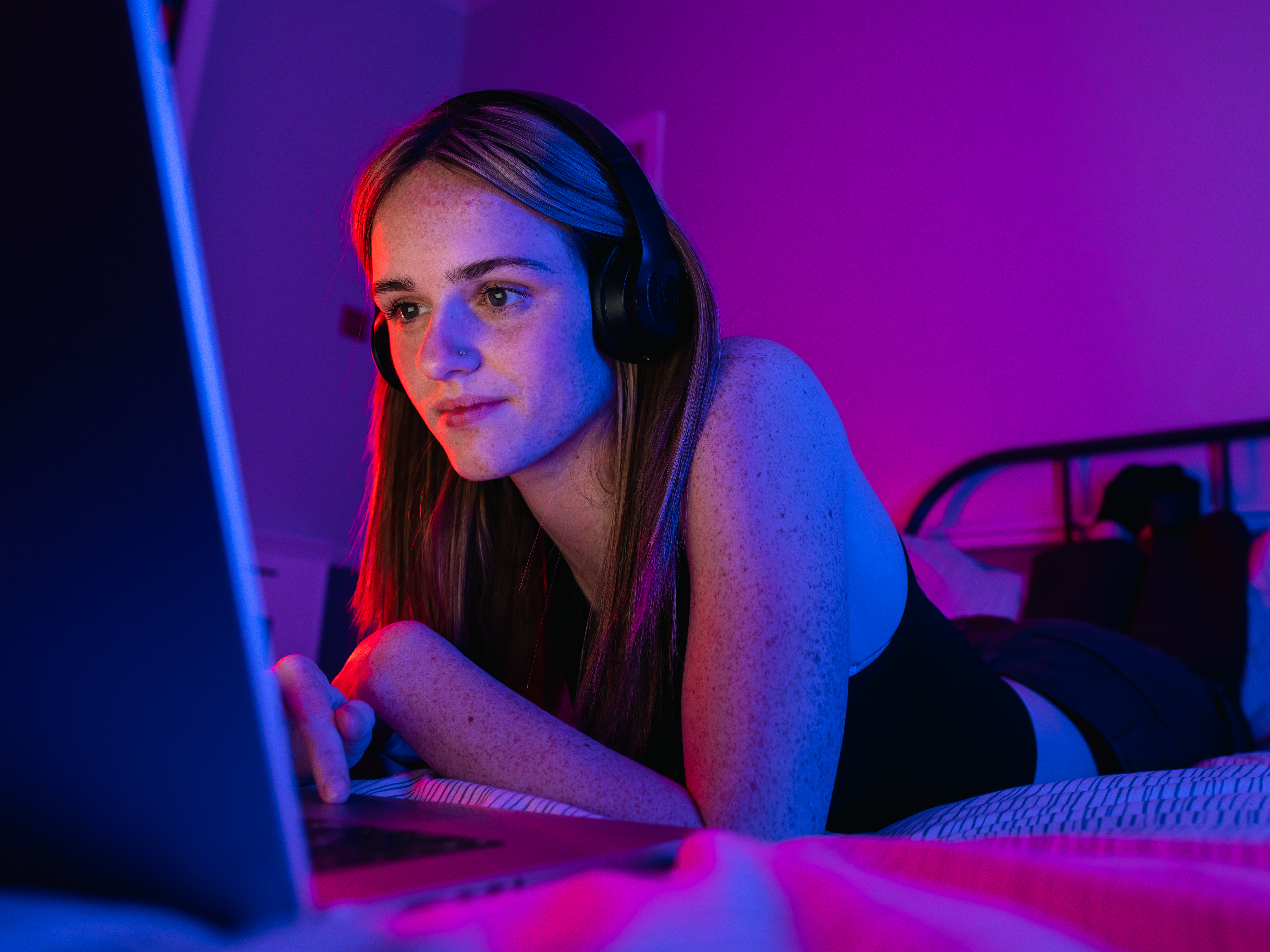
“I think it speaks volumes when institutions help students to present.”
The days of in-person open days, while not quite numbered, have certainly been subject to some searching questions during the pandemic.
The move to online has seen engagement grow among prospective students, according to research byThe Student Room55% of students planned to attend a virtual open day in 2022 and 41% had already attended an online open day by March 2021. And has led universities to reassess their open day offers.
Central to this re-evaluation has been the shift towards using more student-generated content to increase engagement. Three examples here:
It's clear from Springpod research that talks that included students had higher engagement rates than those that didn’t: They were “definitely our best-performing talks”, according to Alison Sedgwick, Marketing Manager at the Royal College of Art (RCA).
The History of Design talk from the RCA’s open day in October 2020 had the highest engagement they’d ever seen.
In the session, the academics kept their sections brief and handed them over to the students to talk about their personal experience of the course. The engagement rate for this session was 87% compared with an average of 30–40% for the open day as a whole.
Although perhaps at an advantage in that the very nature of an arts and design university makes for more visually appealing presentations to many, one admissions tutor did report back that it was a valuable learning curve for the students, in terms of pitching work to an audience.
As one current student said:
We really enjoyed sharing our work with a wider audience of prospective RCA students.”
With the signs from October’s open day pointing towards far greater engagement with the more student-led sessions, the March 2021 iteration saw students taking the lead in a presentation on a major annual project for the School of Design, called the Grand Challenge.
The project enables students to showcase how they have sought solutions to a relevant global issue. This session was among the presentations with the highest conversion rates - 58% compared to an average of 20-30% for the other sessions that day.
One of the RCA’s academics who helped facilitate a student-led presentation spoke of their happiness that it had been well received by the online audience:
“I think it speaks volumes when institutions help students to present."
Obviously, the pandemic has changed the way organisations run, perhaps forever. That needn’t necessarily be a bad thing though, says Alison. She stated that the RCA’s work in progress show, which usually takes place in January, will be staying online for the foreseeable future:
“There’s no going back now.”
Impressive viewer stats backed up digital’s claims — these rose to over 1,000 compared to the usual 400-500 when the open day was in person — and, as Alison asserted, the RCA “opened up to the world” through its online offering. Diversification in terms of candidate applications went “through the roof” with more and more applications in target regions, such as the ASEAN region and India.
As Priti Patel, Assistant Director of Marketing and Communications: UKSR and widening participation at Queen Mary University London, also highlighted to us, “it’s [online events] a lot more accessible and less threatening for people as well. The sector has responded incredibly well to shifting open days to a digital-only platform. However, given the speed and intensity in which the online open day offer exploded overnight the market has been saturated – this is resulting in lower engagement amongst certain groups.”
“As the UK gradually lifts lockdown restrictions, we are keen to leverage all the benefits of an online open day with a blended on-campus experience for those who want to see us in person. This fits beautifully with our international outlook as well – enabling us to engage global and hard to reach audiences whilst delivering an in-personal service to local and national students. Everyone wins.”
With the information around course descriptions and the curriculum easily accessible online, for Alison, the onus should be on telling a personalised student story. But with on-campus open days shelved for the time being, and these being shifted to online, how do you go offer that extra something, which isn’t available on a website? “The obvious answer to me is to get a student in to talk about it because you’re going to believe them over the academic,” Alison explained, before pointing to the “inspiring” stories that students have to tell.
“They’re more inspiring as well I think, the students,” says Alison.
“Academics can be a bit jaded sometimes. We’re definitely going to include more students in future.”
One way of doing this is to include the Students Union (SU) more and to get them to contribute to the open day experience. Understandably, the SU had other more pressing student issues to contend with during lockdown but it’s certainly an option to explore in future, Alison acknowledged.
One way of disseminating a sense of place for the RCA was the virtual Google Maps tour of the university’s campuses, conducted by a former SU president. Different points of interest were pointed out, along with great places to eat and the like, as a highlights package was created for prospective students. A lack of resources to some degree is a sticking point for many universities and so it becomes incumbent on higher education institutions to think of new, engaging ways to share specific information with potential students that may not be available in the traditional course explainers. Alison also underlined her wish to see a “student ambassador, peer-to-peer tool on our website” in the future, in a bid to appeal directly to prospective students.
To hear more from our parents, views from students and marketing leaders, download our free guide to 21/22 online recruitment by clicking the button below.




